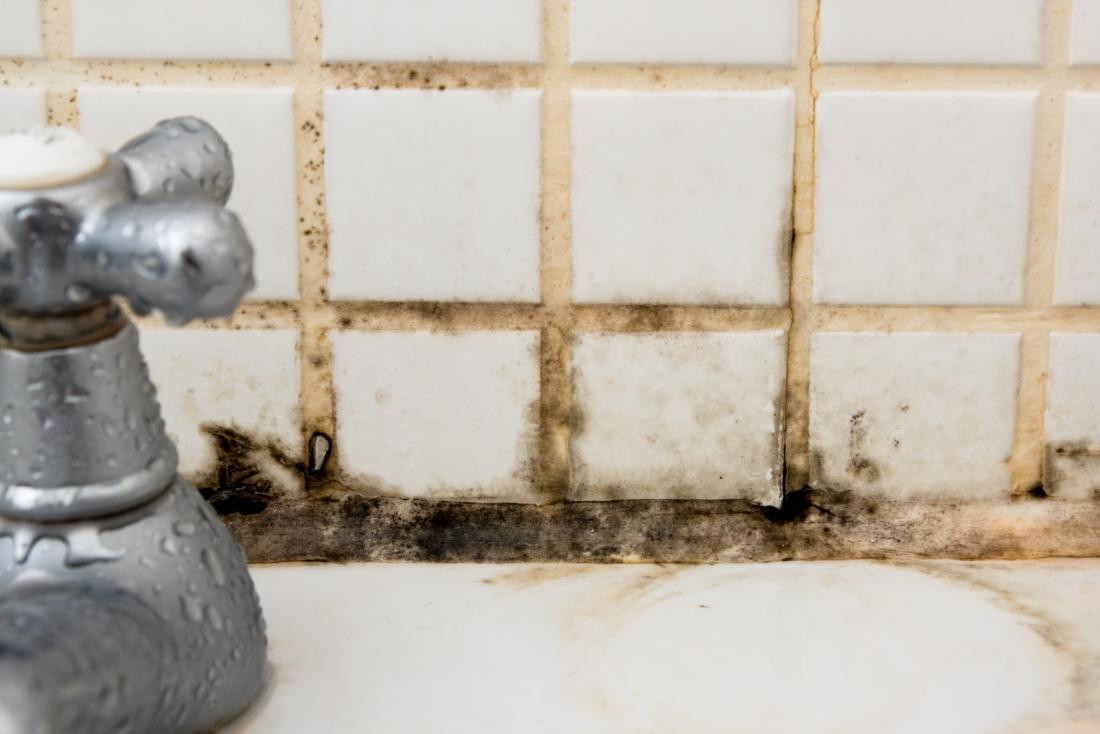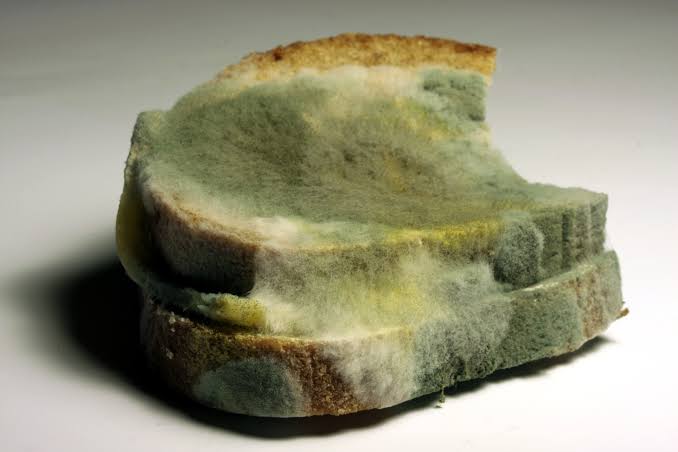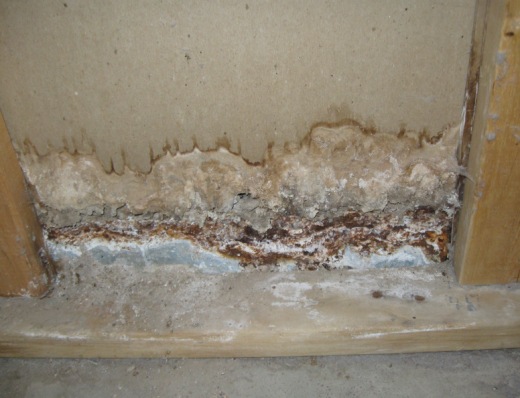1. Stachybotrys (Black Mold)
Stachybotrys, commonly known as black mold, is one of the most well-known and dangerous molds. It thrives in areas with consistent moisture and poor ventilation, such as water-damaged walls or ceilings.
Black mold produces mycotoxins, which can cause a range of health issues, including respiratory problems, allergic reactions, and even neurological symptoms in severe cases. If you spot dark green or black patches of mold, it’s important to address the issue quickly.
Learn more about black mold and its dangers from the Centers for Disease Control and Prevention (CDC).

How to Identify Stachybotrys
- Color: Dark green or black
- Texture: Slimy
- Smell: Musty or mildew-like
- Common Areas: Water-damaged walls, ceilings, or floors
2. Aspergillus
Aspergillus is a common household mold that appears in many different colors, including green, yellow, brown, and white. While many species of Aspergillus are harmless, some can produce toxins that cause allergic reactions, respiratory infections, and lung inflammation.
Aspergillus can grow on a variety of surfaces, such as food, walls, insulation, and furniture. This mold is more likely to affect individuals with weakened immune systems, so it’s important to remove it promptly.
The EPA offers guidance on mold and moisture control to help prevent the growth of molds like Aspergillus.

How to Identify Aspergillus
- Color: Green, yellow, brown, or white
- Texture: Powdery or fluffy
- Smell: Musty
- Common Areas: Walls, insulation, HVAC systems, and food
3. Cladosporium
Cladosporium is a mold that typically grows on fabrics, wood, and other porous materials. It thrives in both warm and cool environments, making it common in homes in many climates. This mold can trigger asthma attacks and cause allergic reactions, especially in sensitive individuals.
Cladosporium may appear black, green, or brown and is often found in damp areas like bathrooms, basements, and around window sills.
According to the National Institutes of Health, Cladosporium is one of the most prevalent molds in indoor environments and can cause serious health issues if left untreated.

How to Identify Cladosporium
- Color: Black, green, or brown
- Texture: Velvety or suede-like
- Smell: Musty
- Common Areas: Fabrics, wood, window sills, and damp areas
4. Penicillium
Penicillium is a mold that is often found on water-damaged materials like carpets, wallpaper, and insulation. It is known for its fast growth and ability to spread throughout a home. Although some species of Penicillium are used to produce antibiotics, other species can cause respiratory problems, allergic reactions, and sinus infections.
Penicillium can be identified by its distinctive blue or green color and fuzzy texture. It grows quickly and can cause significant damage to your home and health if not addressed.
More information about household molds, including Penicillium, can be found on the EPA’s mold resource page.

How to Identify Penicillium
- Color: Blue, green, or white
- Texture: Fuzzy or cotton-like
- Smell: Earthy or musty
- Common Areas: Carpets, insulation, wallpaper, and damp areas
5. Alternaria
Alternaria is a fast-growing mold commonly found in damp, dark areas like showers, under sinks, and around window frames. This mold is allergenic and can cause symptoms such as sneezing, coughing, and skin irritation. It’s particularly common in homes that have suffered water damage.
Alternaria is often associated with outdoor mold, but it can easily make its way into your home and spread rapidly. It is one of the most common molds found indoors.
The CDC offers helpful information on the health risks associated with different types of mold, including Alternaria.

How to Identify Alternaria
- Color: Dark green or brown
- Texture: Fuzzy
- Smell: Musty
- Common Areas: Bathrooms, basements, under sinks, and damp areas
How to Deal with Household Mold
If you spot any type of mold in your home, it’s important to act quickly. Mold can cause serious health problems, particularly for individuals with allergies, asthma, or weakened immune systems. At Citywide Mold Mitigation, we offer professional mold inspection, removal, and prevention services to help keep your home mold-free.
Always remember that DIY mold removal can be risky, especially if the mold has spread over a large area or if you’re dealing with toxic mold like Stachybotrys. Professional mold remediation ensures that the mold is safely and thoroughly removed from your home. Contact us today to schedule an inspection or to learn more about how we can help.
FAQ
1. How can I tell if I have mold in my home?
Common signs of mold include a musty odor, visible discoloration (usually black, green, or brown spots), and the presence of damp or humid areas in your home. Mold testing can confirm the presence of mold and determine its type.
2. Is all mold dangerous?
Not all molds are harmful, but some produce allergens and mycotoxins that can lead to respiratory issues, allergic reactions, and other health problems. It’s important to remove mold, regardless of type, to maintain a healthy living environment.
3. How do I prevent mold from growing in my home?
To prevent mold, control moisture by fixing leaks, ensuring proper ventilation, and using dehumidifiers in humid areas. Keeping your home dry and well-ventilated is key to preventing mold growth.
4. Can I remove mold myself?
For small mold growths (less than 10 square feet), you may be able to clean it yourself using mold-specific cleaners. However, for larger infestations or toxic molds, it’s best to hire a professional to ensure proper and safe removal.
5. How quickly can mold grow after water damage?
Mold can begin growing within 24-48 hours of water exposure. It’s important to dry out affected areas quickly and address any moisture issues to prevent mold growth.

